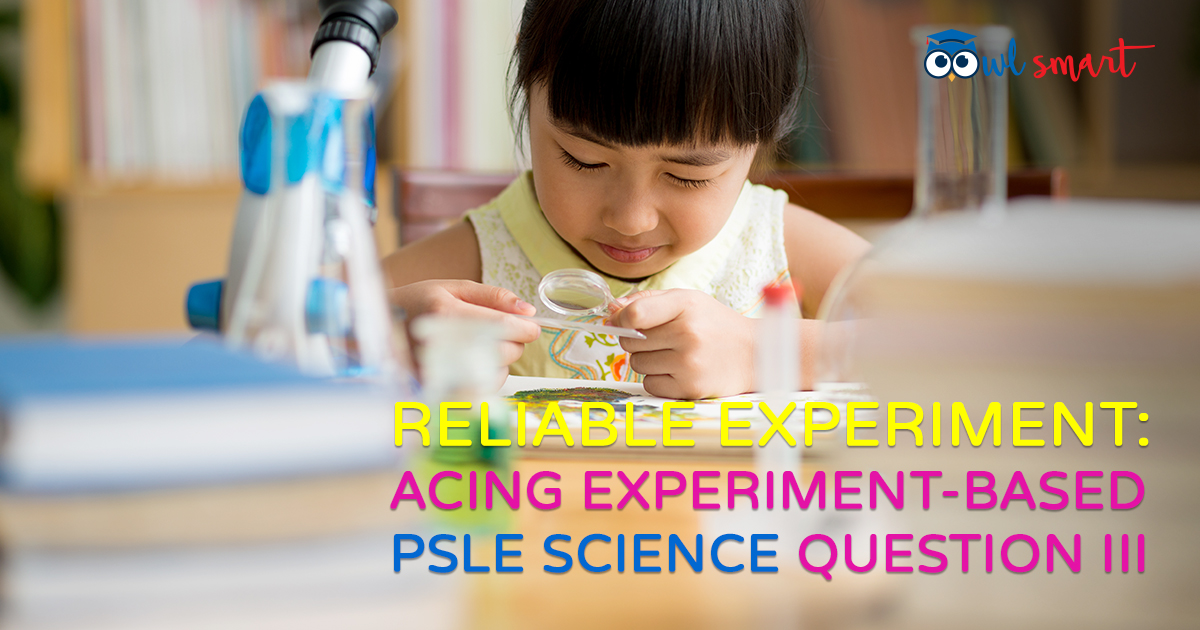Reliable Experiment: Acing Experiment-Based PSLE Science Questions III

This is the third of five articles on experiment-based questions in PSLE Science paper. I will share with you some insights on carrying out a reliable experiment so that you can handle this category of questions in PSLE Science with confidence.

Common Question: How to Ensure a Reliable Experiment
-
Repeat experiment at least 3 times until results are consistent. The focus is not about repeating how many times, though there should be a minimum of 3 times.
-
But why should there be a minimum of 3 times at least? The reason is we can only find the average of at least 3 sets of consistent data to make the results collected more accurate.
-
If there are only 2 sets of data collected, the average result will be wrong if one set of experiment is carried out wrongly. We will not know which set of data is the accurate one if there are only two sets of data and they are not consistent.
-
If the results are still not consistent after repeating 3 times, the experiment should be repeated again till results collected are consistent. (Do not use the word “accurate”, common mistake made by pupils)
Example:
Jack wanted to investigate if the amount of water given to a plant would affect the height of its growth. He planted an identical bean, each of similar height (3 cm), in 4 similar pots. Each pot contained the same amount and type of soil. Each seedling was given different amount of water daily. He measured the height of each seedling at the end of 3 weeks and recorded his observations in the table below.
| Pot | Daily amount of water (ml) | Height of seedling after 3 weeks (cm) |
| A | 10 | 6 |
| B | 20 | 12 |
| C | 30 | 18 |
| D | 40 | 25 |
Jack wanted to ensure that his results were reliable. What should he do?
Correct Answer Example 1:
To ensure that his results were reliable, he should grow at least 3 plants in each pot and take the average height of the seedlings in each pot after 3 weeks. There should be the same number of beans in each pot.Correct Answer Example 2:
He can prepare 3 sets of Pot A, B, C and D at the same time. There should be 1 bean in each pot of all the 3 sets. All the 3 sets of Pot A should be given 10 ml of water each. 20 ml of water should be given to each of the 3 sets of Pot B and so on for the rest of the pots. Take the average height of the seedling in each pot A of the 3 sets after 3 weeks. Do the same for pots B, C and D.Note that the aim of the experiment is to investigate if the amount of water given to plant would affect the height of its growth.
Thus, only the variable of amount of water given to each pot can be different while the rest of the variables must be kept the same. For example, type of beans.
Amount of water given to each pot is the independent variable. The height of seedling after 3 weeks is the dependent variable or the variable to measure.
Note that there is a minimum of 3 sets or 3 plants in both examples of correct answers. 3 is the minimum number when it comes to repetition of experiments to ensure a reliable experiment.
About the Author
Teacher Zen has over a decade of experience in teaching upper primary Math and Science in local schools. He has a post-graduate diploma in education from NIE and has a wealth of experience in marking PSLE Science and Math papers. When not teaching or working on OwlSmart, he enjoys watching soccer and supports Liverpool football team.



